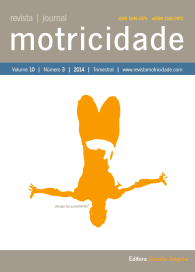Comparative analysis of the use of space in 7-a-side and 8-a-side soccer: how to determine minimum sample size in observational methodology
DOI:
https://doi.org/10.6063/motricidade.4138Abstract
In 2011-2012, the Spanish Soccer Federation changed the format of junior championship matches played between regional-level teams in Spain from a 7-a-side to an 8-a-side format. Soon afterwards, the regional federations followed in their footsteps by adapting their competition formats accordingly. Taking the use of space as a functional indicator of the quality of play in U-10 soccer, the present study examines the relative suitability of the 7-a-side and 8-a-side formats for developing the skills of young players. Of 9 hypothesis contrasts relating to the zone in which a move initiated in the attacking team’s goal area ended, only one was significant (p < .05) in the standard analysis, even though the contingency tables suggested there were genuine differences between the two formats studied. Consequently, the statistical software program GPower was used to determine the minimum sample size necessary to detect significant differences for four levels of statistical power: 95%, 90%, 85%, and 80%. Given the difficulty of organizing a new round of data collection, we simulated an increase in sample size while maintaining the characteristics of the original data (frequencies, variability, and distribution). The results obtained through the original sampling were then compared with those from the simulation.
Downloads
Published
Issue
Section
License
The authors of submitted manuscripts must transfer the full copyright to Journal Motricidade / Sílabas Didáticas Editions. Granting copyright permission allows the publication and dissemination of the article in printed or electronic formats, and copyrights start at the moment the manuscript is accepted for publication. It also allows Journal Motricidade to use and commercialise the article in terms of licensing, lending or selling its content to indexation/abstracts databases and other entities.
According to the terms of the Creative Commons licence, authors may reproduce a reasonable number of copies for personal or professional purposes, but without any economic gain. SHERPA/RoMEO allows authors to post a final digital copy (post-printing version) of the article on their websites or on their institutions' scientific repository.


